
17 government inspectors, 170 companies and more than 9,000 potential infractions: inside B.C.’s oversight of the oil and gas sector
Notes made by regulator officers during thousands of inspections that were marked in compliance with...
George Delisle ambles along a road in his 600-hectare woodlot with a snowshoe tucked under each arm. For now, the snow — compacted by snowmobiles and the daily strolls of Delisle and his wife Frauke — provides a firm footing. But Delisle wants to show me a particular tree, the largest Douglas fir on his woodlot, and that requires going off-road.
Delisle’s woodlot is a 15 minute drive west from Rock Creek in British Columbia’s Boundary region. The log home that he and Frauke recently moved into is within walking distance and sits on a property Delisle bought from his uncle in the 1980s.
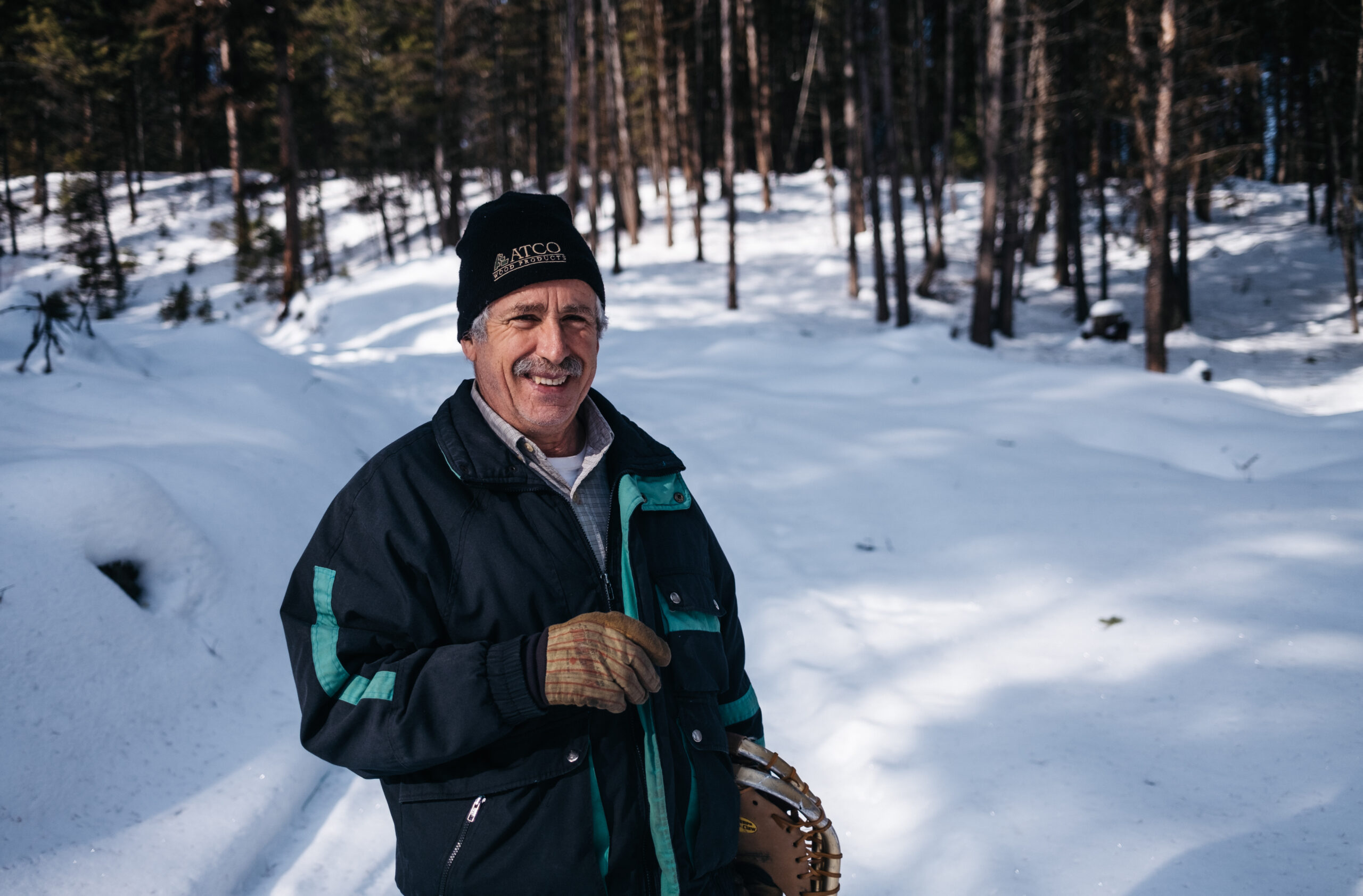
We pass a large, old-growth Western larch with a wildlife tree tag tacked to its reddish, scaled bark. The tag denotes a tree, often an old-growth or dead tree, that’s used by wildlife for nesting, shelter or food. Thanks to trees like this, Delisle’s woodlot has one of the province’s highest known concentrations of the rare Williamson sapsucker woodpecker.
Above the tag is a birdhouse that Delisle made. After placing 135 such birdhouses across his property, woodlot and neighbouring lands, he quit counting.
“It started mainly for the bluebirds but I got a little carried away,” he says. “Now they are occupied by chickadees, nuthatches, swallows, house wrens and LBBs.”
“What are LBBs?” I ask.
“Little brown birds,” he says, laughing.
Delisle’s intimacy with the land is apparent.
He grew up in the area and has been managing his woodlot since 1984; a time that has seen him complete two passes of selective logging. Bending over to examine a set of old tracks in the snow he speculates on who left them.
“Probably a coyote by the way it’s staggered like that.” Rising from his inspection, he gestures to a high point in the forest. “There’s a bear den up on the hill over there.”
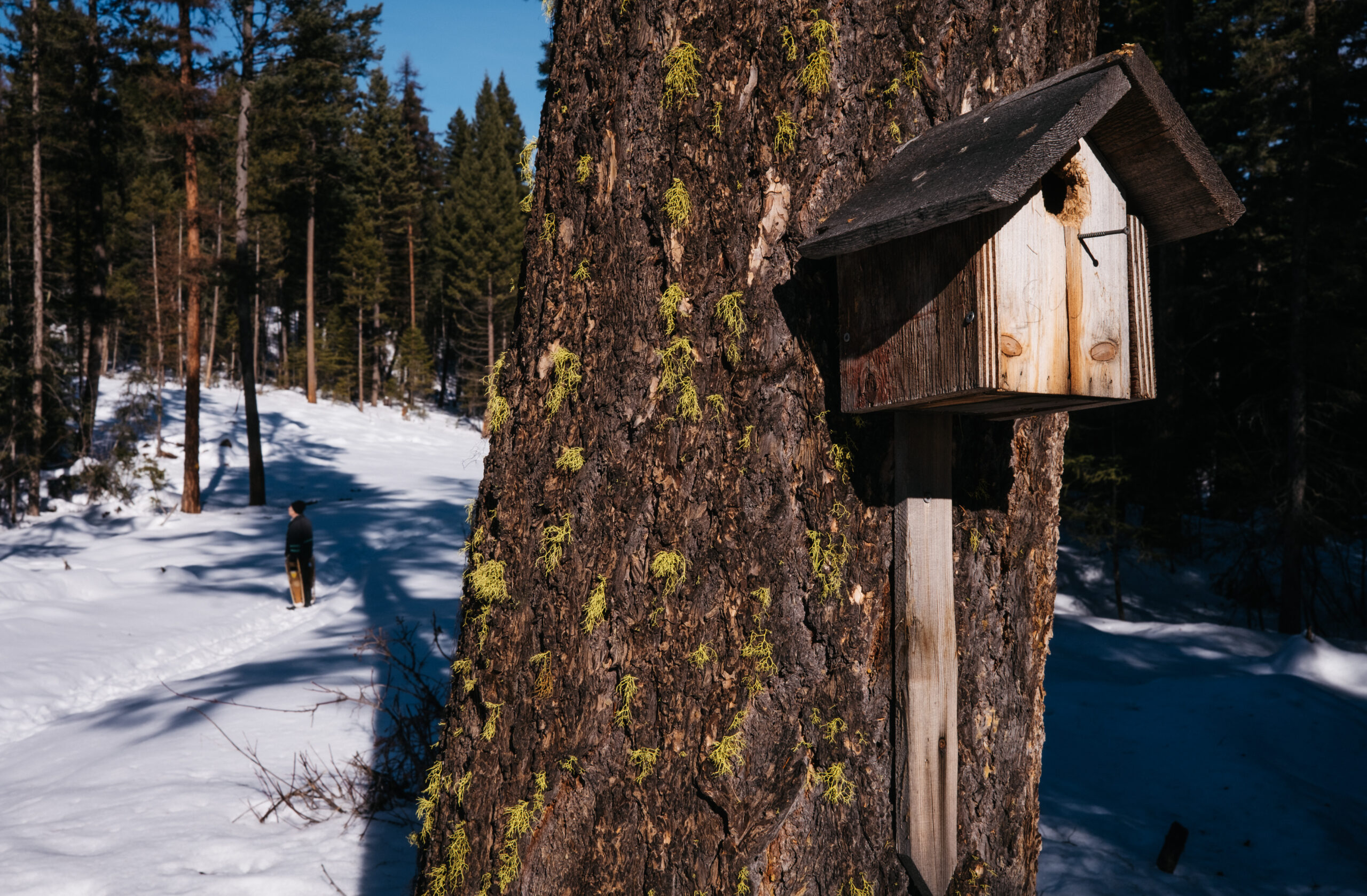
Woodlots are restricted areas of woodland that are normally harvested as a source of fuel or lumber. The provincial program has been in operation for almost 75 years, but originally it was focused on giving farmers rights to forested Crown land. Then, in 1979, an amendment to the Forest Act enabled non-farmers to get woodlot tenures and the program grew dramatically.
According to the website for the Federation of British Columbia Woodlot Associations there are approximately 850 active woodlot licences in the province, covering roughly 600,000 hectares — about 10 per cent of which is private land.
The familiarity with which Delisle talks about his woodlot is exactly why proponents of the program, like Delisle, see the localization of forest management as so important.
As Delisle walks, he points out how the tops of trees are indicators of a tree’s health and explains which ones he might remove when he logs again in 15 or 20 years. “You have to think in passes. One pass, two pass, three pass, four pass. That’s a 100-year cycle.” He is 72 years old.
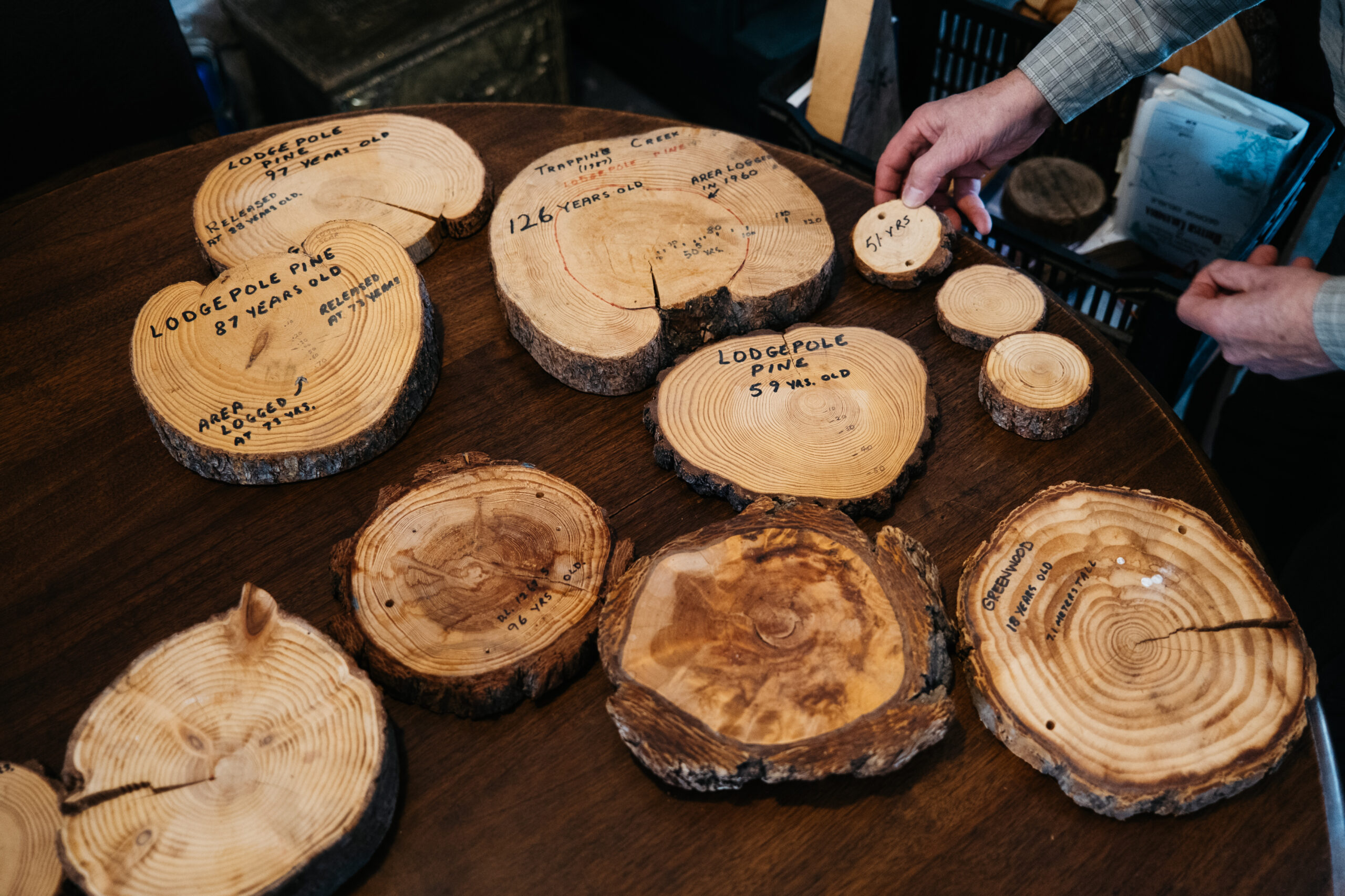
Delisle is opinionated and talkative, stopping every 10 metres to continue a thought or start a new one. He has a short, slight frame, a moustache that is almost entirely grey and a scar that runs from his right nostril, across his mouth, and down to his chin — a vestige from a chainsaw accident when he was 16 years old. Educated as a mining technologist, he ended up working as a logging and reforestation supervisor for the forest products company Pope and Talbot for 27 years.
He believes selective logging is like a good marriage: full of compromises. “You have to be willing to change and be fluent when you’re moving through the forest,” he says.
Delisle also explains that he believes large-scale industrial forestry is too prescriptive. “Nature doesn’t work that way,” he says. “It’s extremely variable and just small changes in the microsites mean you have to be flexible and that’s where professional forestry falls down.”
Delisle isn’t the only one with experience in B.C.’s forestry industry with those views. The Narwhal spoke with a number of woodlot owners as well as stakeholders from local communities and other experts who share similar opinions about the state of forest management in the western province. They believe that government policy has created a playing field skewed to the advantage of large corporations, leaving little room for smaller, local operations — something that ultimately damages local economies and the environment.
The Narwhal also reached out to the Forest Products Association of Canada, which declined to comment, and the BC Council of Forest Industries, which did not respond. The provincial government’s Ministry of Forests also did not respond.
Fifty-six kilometres from Delisle’s woodlot, near the ghost town of Eholt between Greenwood and Grand Forks, a circular saw blade nearly two metres in diameter sits on the side of Highway 3. The words Son Ranch Timber Co. are neatly painted in orange letters. Beneath that, green lettering advertises cabin rentals, a logging museum, timber framing and log sales. A short drive down Son Ranch Road sees visitors greeted by friendly, barking dogs, a mecca of logging history and a unique example of forestry.
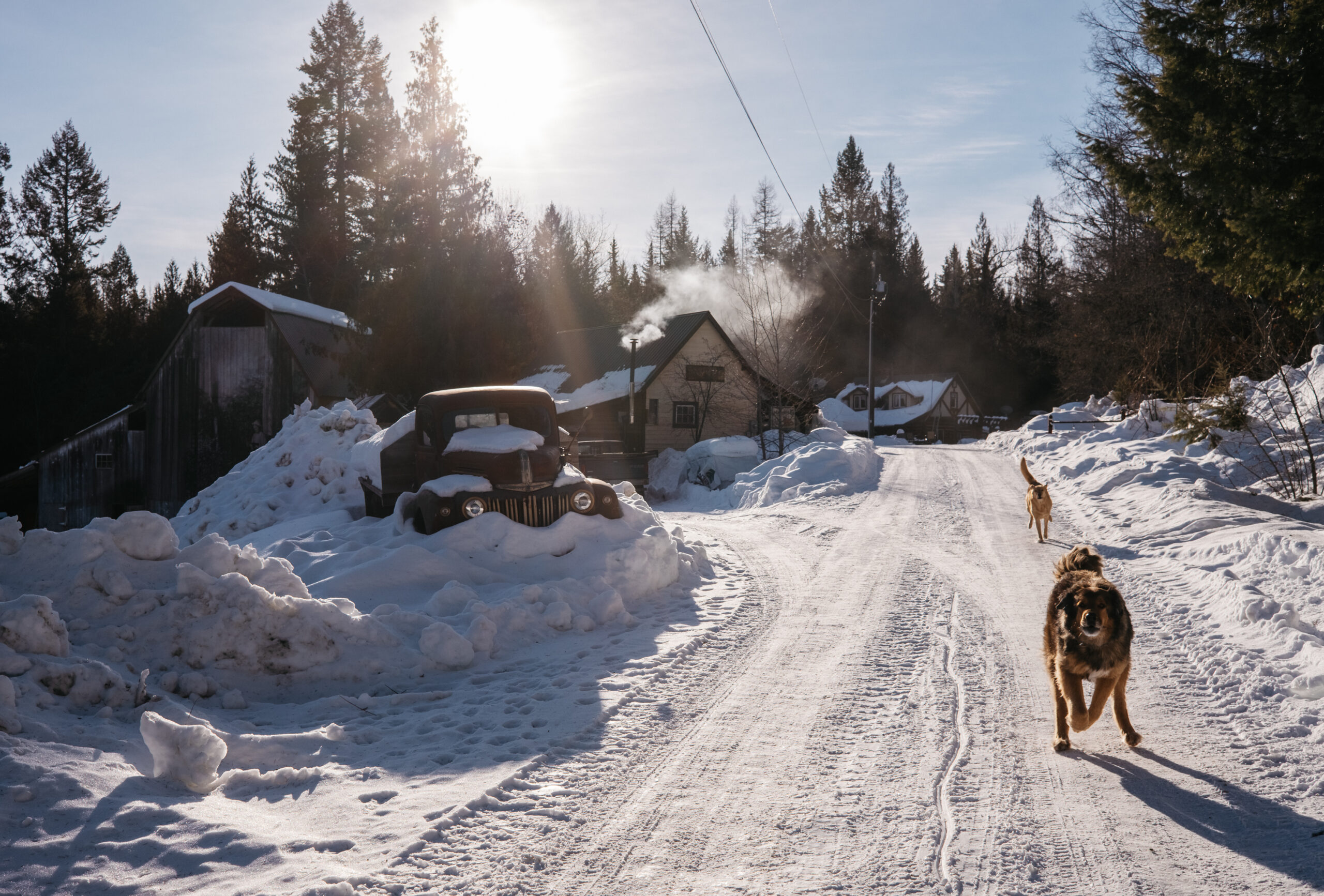
Son Ranch is a family business run by Ross and Janis Freer along with their son Shilo and daughter Jade. Aside from a world-class logging museum, which includes a collection of over 2,000 rare and antique chainsaws, they own two woodlots, a mill, a kiln for drying lumber, an industrial planer and a moulder for creating specialty, value-added wood products. A nephew runs the planer, an uncle runs the self-loading logging truck and a second-cousin sees to silviculture needs.
Their diversity of products and services allows for a certain flexibility and resilience, says Shilo, a timber framer who runs the 1930s-era head saw mill and believes their operation could serve as a model for forestry in B.C. “There should be a hundred operations like this,” he told me. “Last year I could turn the mill off and hear trees falling in our woodlot. Roots to roof in less than a kilometre. That’s some pretty localized logging.”
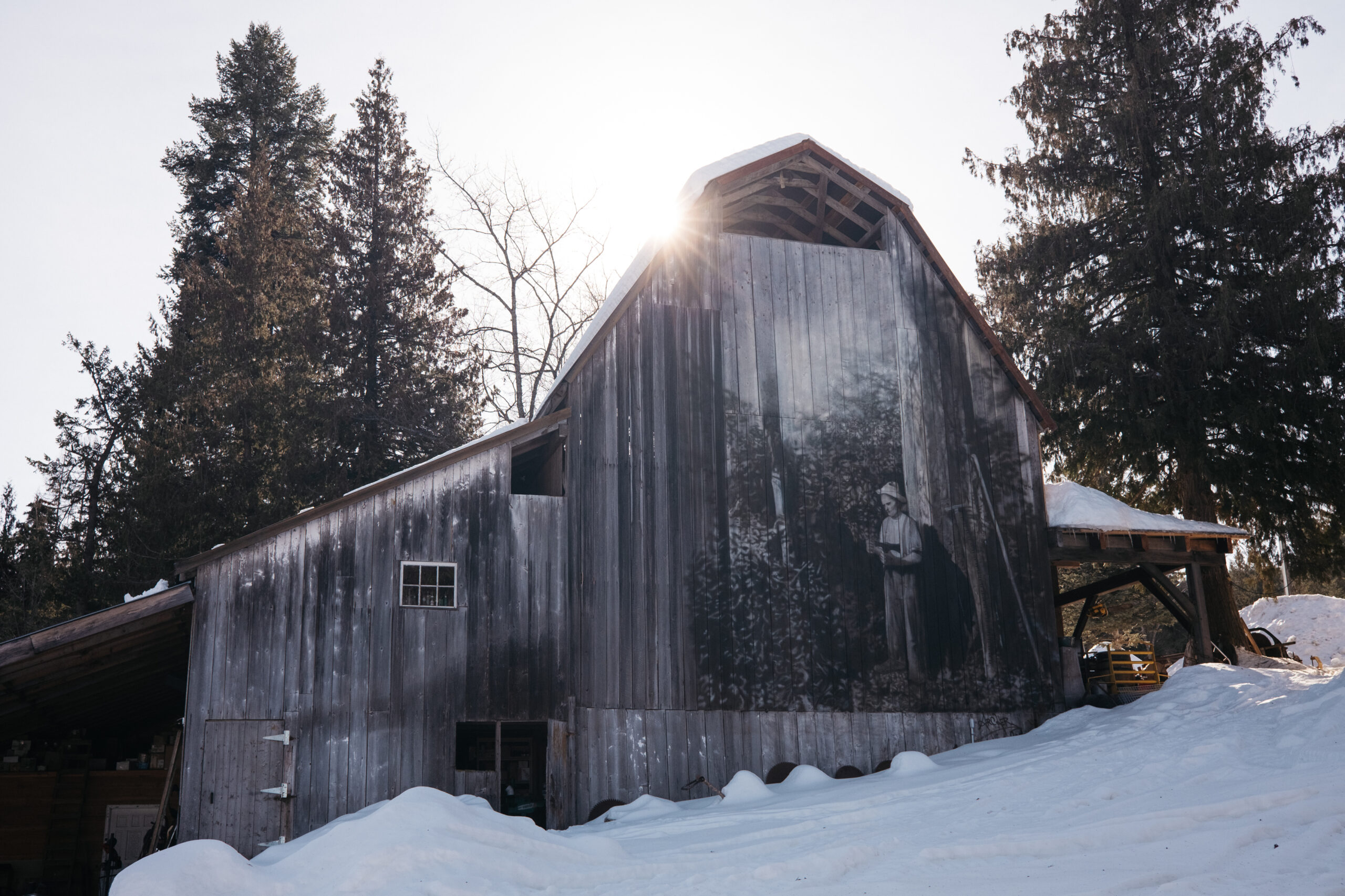
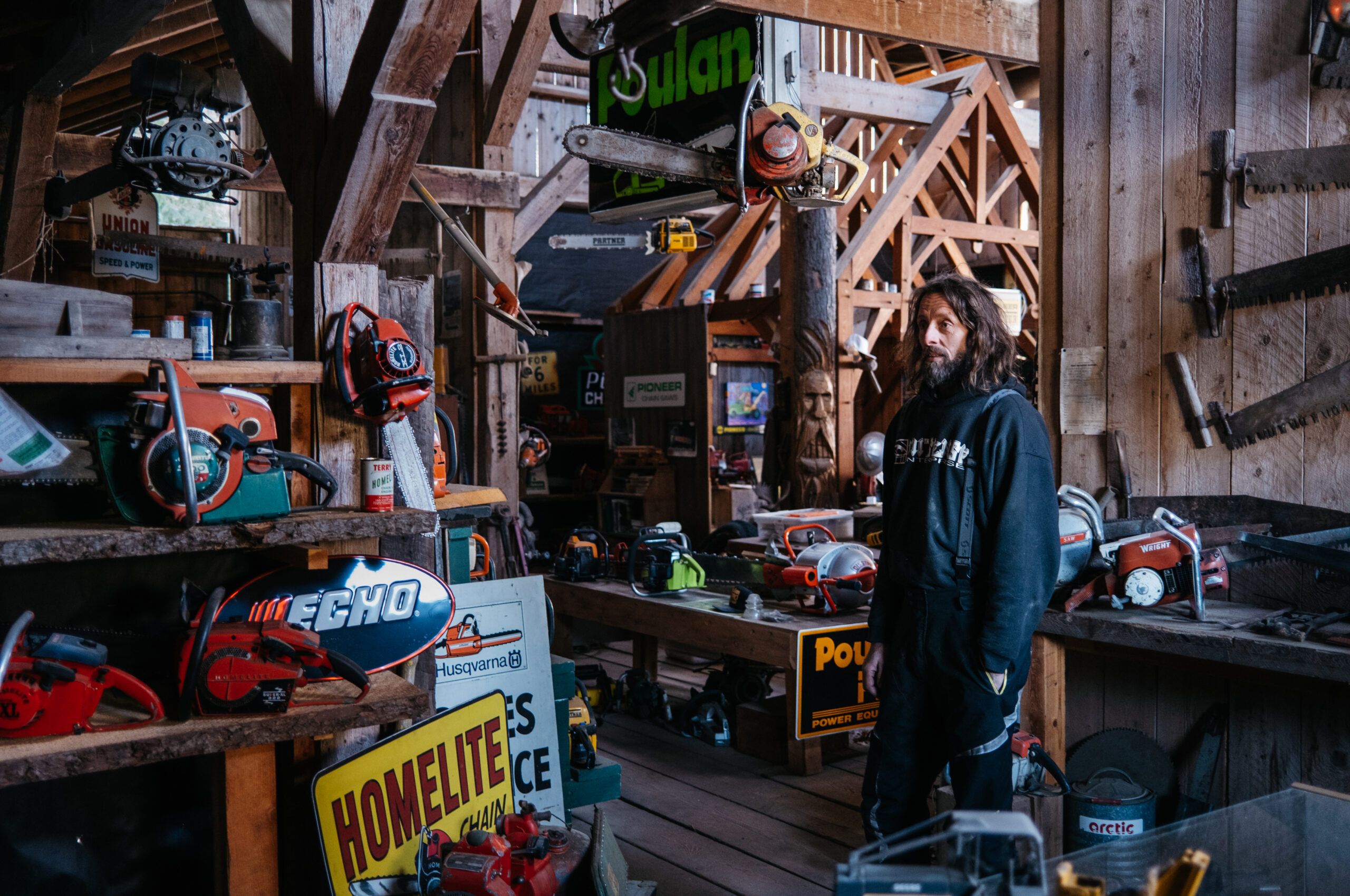
Tyler Hodgkinson, president of the Boundary Woodlot Association and owner of a woodlot near the Freers, agrees that localized forestry is beneficial but believes Son Ranch is in a unique position, unattainable for most people due to the prohibitive costs of woodlot licences and equipment.
Hodgkinson, who considers Delisle a forestry mentor, sees tenure and the control of it by major companies like Interfor and Canfor, as the crux of forest management issues across the province. “There’s no opportunities for youth and no opportunities for junior foresters,” he says while walking across a landing in his freshly-logged woodlot. “There are no opportunities for small-scale logging.”
The Narwhal reached out to Interfor and Canfor but Interfor declined to comment and Canfor did not respond to requests for comment.
Another mentor of Hodgkinson’s is Fred Marshall, a semi-retired forester who, at the age of 81, continues to manage a woodlot adjacent to his land between the Village of Midway and City of Greenwood. A friend of Delisle, he was once a strong supporter of the woodlot program, seeing it as a model for upstanding forestry and land stewardship. However, over the past 20 years, he feels they have “lost their flavour” due to the commodification of the licences.
The romantic image of woodlots like Delisle’s, where wildlife flourishes and the forest hardly looks touched thanks to thoughtful, slow, selective logging, is a fading reality according to woodlot owners like Delisle, Marshall and Hodgkinson. Licences that offered small-scale operators a chance to invest a little money and a lot of time into a piece of tenure that could provide a long-term, stable living now sell for “upwards of $300,000,” says Marshall.
“The way it’s evolved, the woodlot program has fallen off the rails,” says Delisle. “It wasn’t like this when it started because you couldn’t sell them. That changed in the ‘90s and that changed the whole face of the program.”
Tenure is a legal agreement between a company, group or individual and the provincial government to use Crown land for the purpose of economic or recreational activity. Tenure uses range from grazing rights to ski areas and, of course, logging. In B.C., 95 per cent of land is considered crown land by the provincial government and nearly 57 per cent of that is forested. In the case of forestry, there are two kinds of tenure: area-based and volume-based.
Area-based tenures include woodlots, community forests and woodland licences. They give tenure holders exclusive rights to harvest timber from a specific area of land. The amount they are allowed to harvest is based on the annual allowable cut, which is set at least every 10 years by the provincial government’s chief forester. Volume-based tenures such as forest licences also grant rights to harvest a set amount of timber, but over a broader area that is shared with multiple tenure holders.
“An area might have an annual cut of one million cubic metres and one tenure holder might have a licence to cut 500,000 of that,” explained Marshall. “The result is you’re going to high-grade the best and most easily accessible timber.”

According to government figures based on the last cut allotment for the Boundary Timber Supply Area, set in 2016, woodlots, community forests and First Nations woodland licences made up less than eight per cent of the annual allowable cut. In a 2019 column in the Williams Lake Tribune, Jim Hilton, a retired forester and agrologist, broke down the allotment of the allowable cut province wide. Though not peer-reviewed, his analysis showed that of the total 64-million-cubic-metre allowable cut, 32.4 million cubic metres were controlled by eight corporations including Interfor and Tolko Industries Ltd., both of which operate in the Boundary region.
This overwhelming control of B.C.’s public forests by a handful of large corporations has, according to Herb Hammond, a forest ecologist who authored the seminal 1991 book Seeing the Forest Through the Trees, created a situation where a once-public-asset has become privatized and commodified. “The power of tenure isn’t exercised through woodlot licencees,” Hammond says. “It’s exercised through large tenure holders like Interfor and Canfor.” Hammond believes a crowning achievement of this lobbying power was the introduction of professional reliance by the provincial government in the early 2000s.
Professional reliance is the idea that professional orders should be the ones entrusted with the planning, management and oversight of their members who work in industry. It would give these professional orders the primary responsibility to oversee these issues, instead of the government.
“That was a huge step backwards in terms of having reasonable standards,” Hammond says.
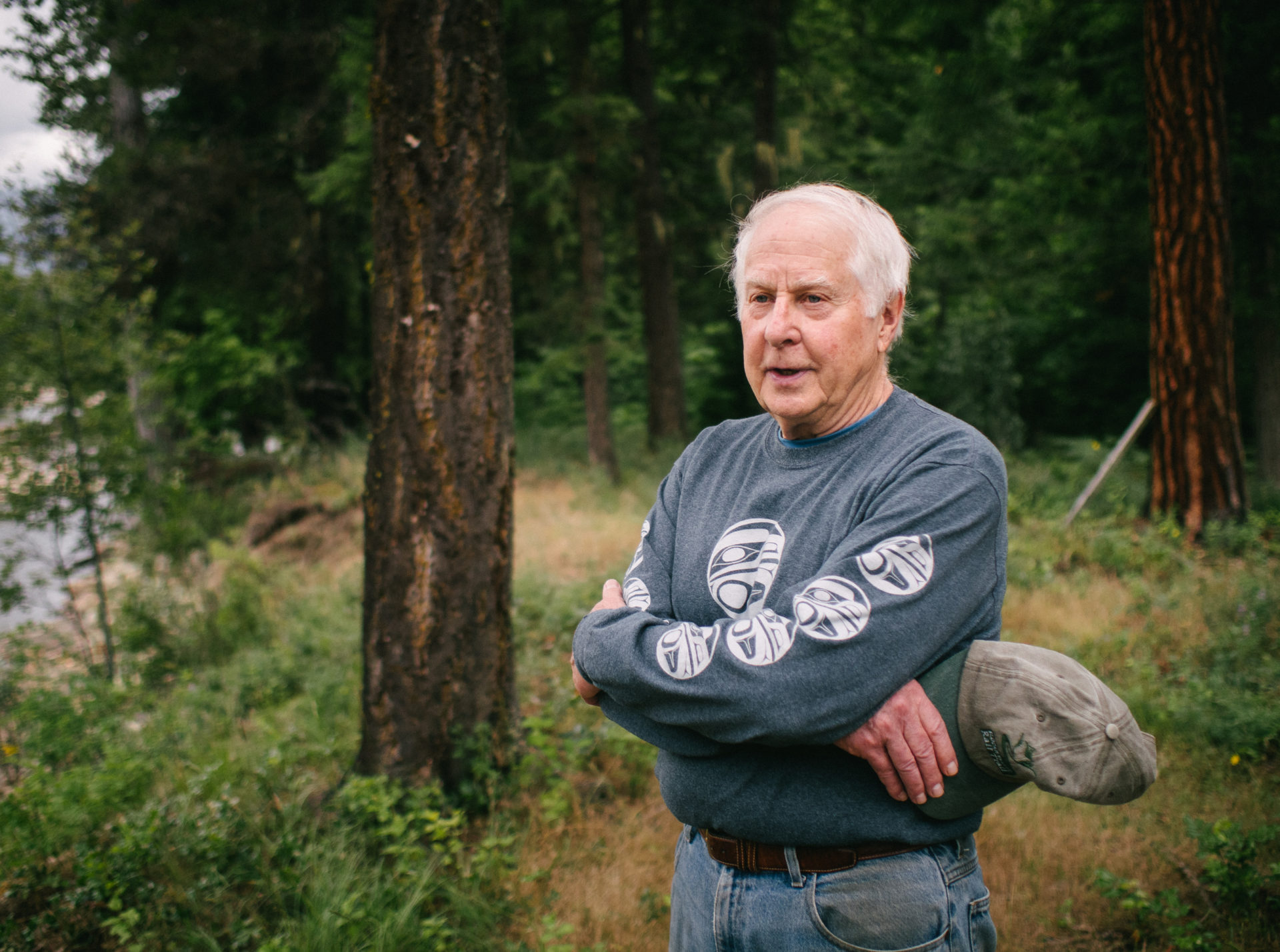
Examples of professional reliance gone wrong aren’t hard to find and it’s easy to equate it to having the fox plan, build and manage the hen house with little supervision or guidance. In the case of the Mount Polley mine disaster, a 2019 report by then-auditor general Carol Bellringer flagged professional reliance as a key issue in oversights that led to the mine’s tailings pond breaching and spilling into nearby water bodies, including Quesnel Lake.
A 2018 report by Mark Haddock, commissioned by the provincial government, titled Professional Reliance Review, recommended that “government establish an Office of Professional Regulation and Oversight … The office would be an agent of government, independent from the natural resource sector ministries and focus on professional governance issues.”
In addressing the Forest and Range Practices Act specifically, the report highlights a submission from the Forest Practices Board stating that a key condition for the involvement of professionals in the government’s resource management decisions is that “government must reserve to itself the right to act when necessary to protect the public interest.” The submission goes on to say that the board has “seen situations where forestry development was putting environmental and community values at risk, yet district managers could do little to affect the development and protect public interest.”
Following the report, the provincial government created the Office of the Superintendent of Professional Governance, assigning Paul Craven to lead the office and oversee professional regulators across different industries. Other changes have included two amendments to the Forest and Range Practices Act — Bill 21 and 23 — that, according to the government website, include goals of increased participation by Indigenous nations in forestry, the clarification of provincial objectives for forest and range resources, improved information sharing in forest planning and the adaptation of resource management to changing land base and values.
While Marshall is hopeful that the Office of the Superintendent can have a positive effect on the professional reliance model, he says only time can tell. However, he sees these changes as being incremental and ultimately believes a full upheaval of forestry policy is required to appropriately adapt to climate change, loss of biodiversity and degraded relationships between government, industry and local communities, including First Nations. He likens these small steps to “putting a bandaid on a body that’s bleeding to death.”
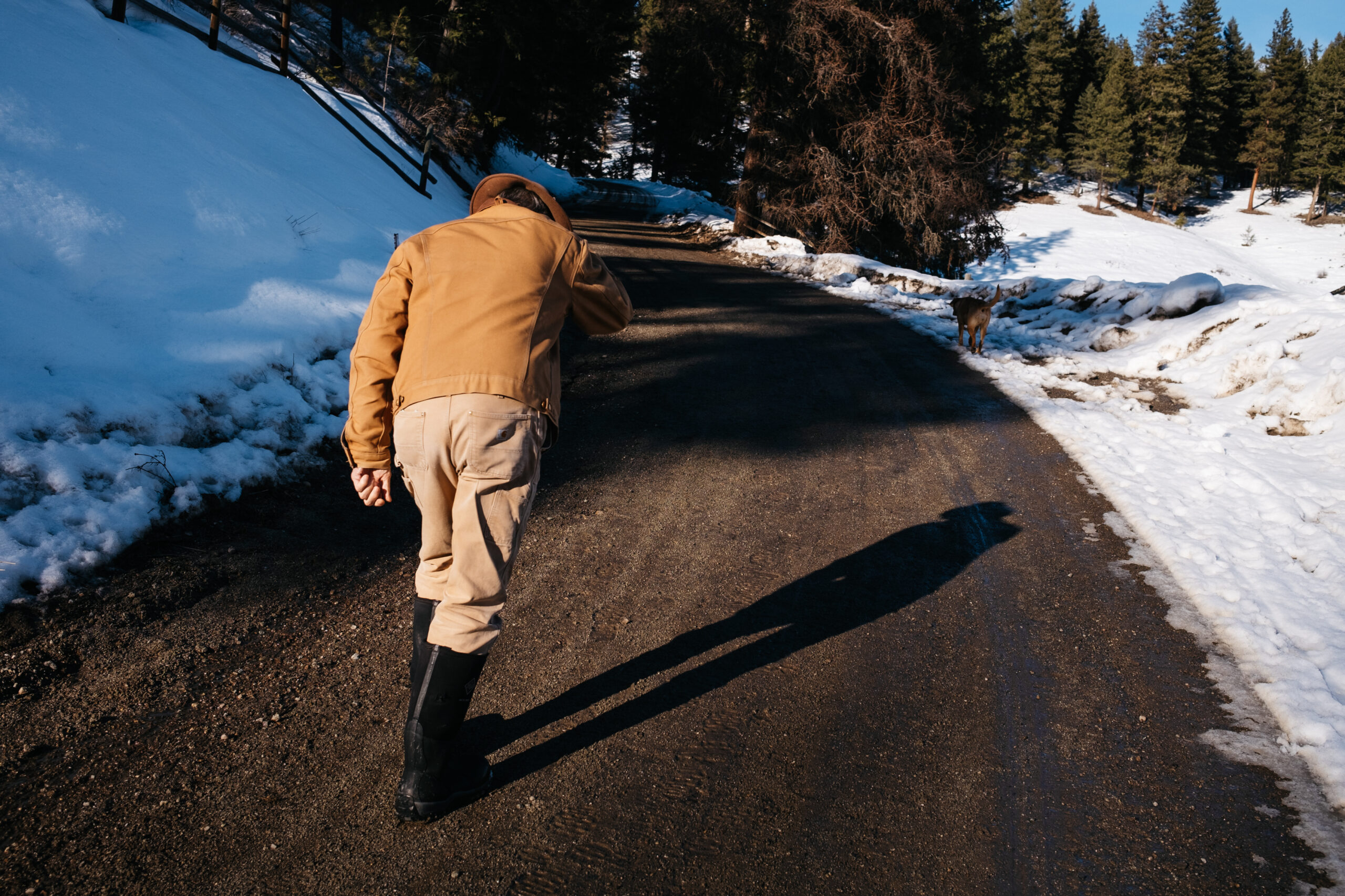
Hammond shares his sentiment. “If we keep tinkering with the system, then we’re just layering on another attempt to fix the system on a system that is fundamentally flawed,” he says.
When Hammond reflects on the book he wrote over three decades ago, he is, by and large, happy with it. He sees the issues he raised then — like the politics of forestry, industrial control of policy and profiteering at the expense of forest health — as still very relevant. When it comes to the solutions — like localizing control of forests, working with Indigenous governments and placing value on biodiversity and watershed health — those too seem as pertinent as ever.
When asked whether he believes those solutions will be implemented from the top down, he says that’s not where he’d start. “My own personal experience with change through the years is to put together grassroots, community-based groups and begin the work to make those changes happen.”
Hodgkinson, who worked as woodlands manager for Kalesnikoff Lumber Co. Ltd. for seven years, also envisions a grassroots-led shift in policy that would empower rural communities and First Nations to control how their local, public forest is managed. “Mills shouldn’t own tenure,” he says. “It should be owned by [First Nations], woodlots and community forests who would sell logs to the mills [through auction].”
Less than 30 kilometres away, Vaagen Fibre Canada, a mill on the outskirts of the Village of Midway, is already modelling itself in this image.
Dan Macmaster lives in Grand Forks but spends a lot of time driving across the Boundary, Okanagan and West Kootenays. As fibre supply manager for Vaagen, a mill that doesn’t own any tenure itself, his job is to develop and maintain relationships with tenure holders to ensure the mill has logs. This model necessitates partnering with woodlot owners, First Nations and community forests — both the West Boundary Community Forest and the Osoyoos Indian Band , contract Vaagen to manage their tenures.
“Our community forest is spread out over 27 different little parcels,” explains Macmaster. “Every four weeks we meet with the board and the public to talk about what we’re doing and what we’re planning to do.” This communication with surrounding residents and local stakeholders allows for ideas and concerns to be aired, Macmaster says, describing this as the “crux of a community forest.”
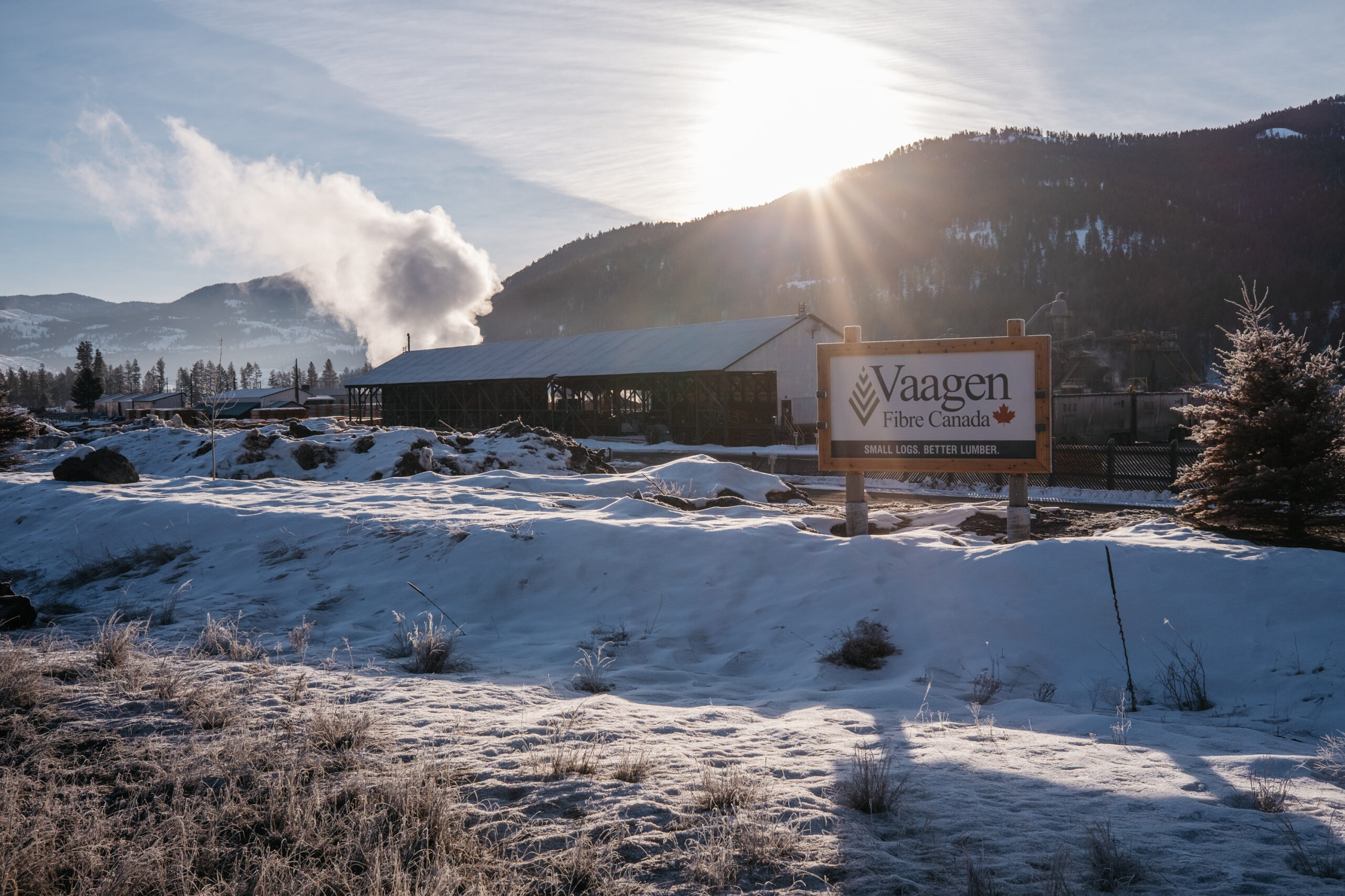
A community forest, like a woodlot, is an area-based tenure that is locally managed but differs in the direction of profits. With a woodlot, revenues usually go to an individual or family, whereas a community forest’s profits end up in the community that owns them. In the case of the Village of Midway and the City of Greenwood — the two stakeholders in the West Boundary Community Forest — the profits are often reinvested in the community through grants, community services or forest improvement projects.
Macmaster also notes that 95 per cent of the work required for managing the community forest — from block layout to road building to silviculture — is done by local contractors. In a region known for its logging history, he is never forced to choose a poor contractor.
“The amount of talent and expertise we have in the Boundary is incredible,” he says.
Macmaster believes that when people are informed and educated, they’re almost always supportive. “It’s been a good model for us even though it’s not easy,” he says. “It’s a lot easier to make a 40 or 80-hectare cutblock … but we don’t believe that’s the direction professional forestry is headed.”
This approach has led to a relationship between Vaagen and the Osoyoos Indian Band that appears mutually beneficial to both sides. Amanda Anderson is the senior referrals officer for the First Nation and works with Macmaster closely on forestry permits submitted on their traditional territory. “Vaagen really tries to ensure that our voices are heard,” she says, adding that they respect culturally important values — like hunting, berry-picking or archeological sites — in their forest plans. “We have a lot of faith in [Dan] and the knowledge he has.”
The vision that Hodgkinson has, of tenure being redistributed from large mills to smaller, diversified operators, wouldn’t be without its bureaucratic challenges. He sees redistribution as a government buy-back program, something that would take millions of dollars. In 2020, Canfor sold a tenure for a combined 349,000 cubic metres of annual allowable cut to Interfor for $60 million.
Hodgkinson is quick to note that redistributing tenure doesn’t mean removing companies like Interfor or Canfor from forestry. “We can’t exist without Interfor and other major companies who have access to larger markets,” he says. “I really think the way forward is removing tenure from major companies but also supporting them.”
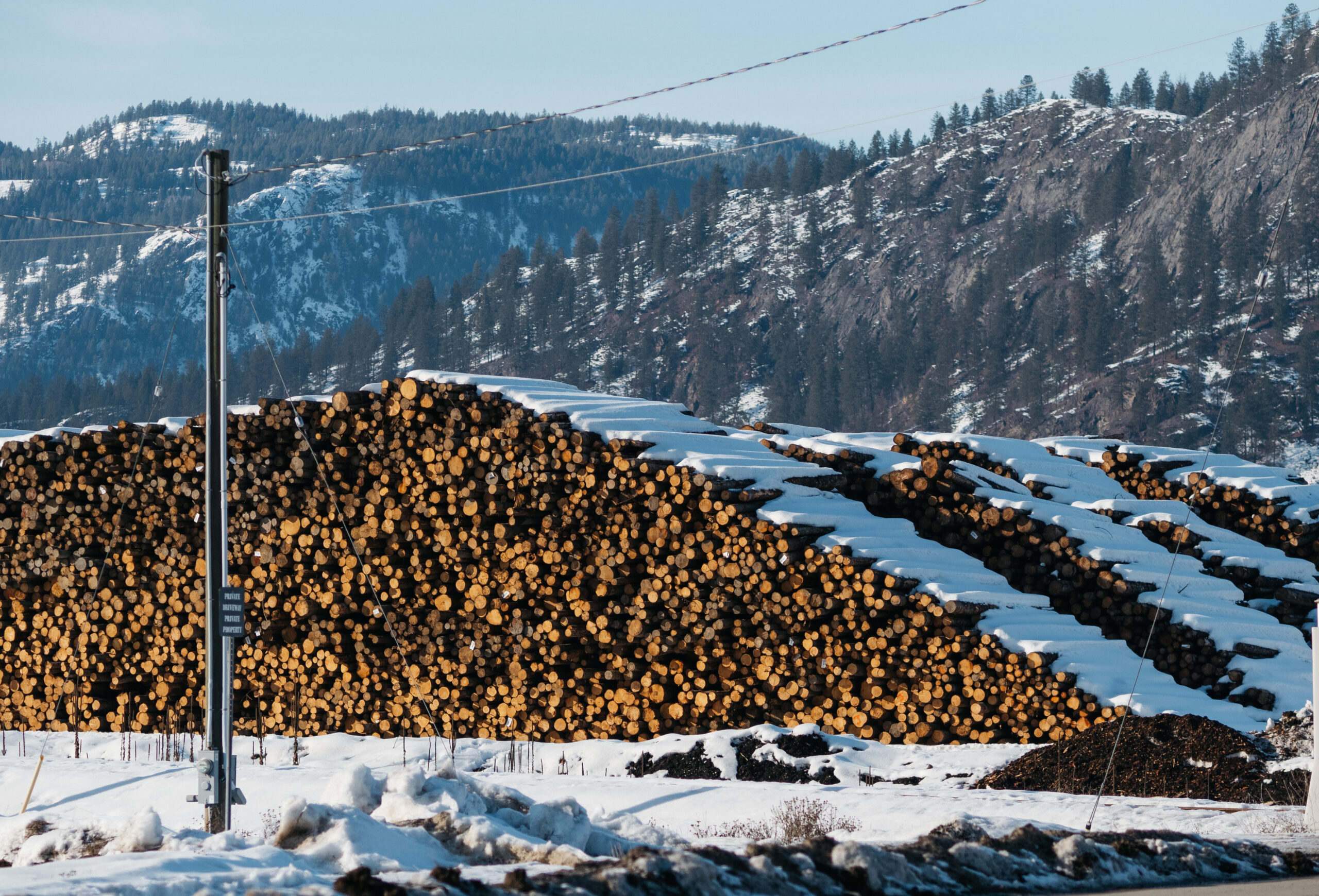
In October 2021, the provincial government introduced Bill 28, a 160-page forest amendment act that, according to a government press release, aims to make the province “landlords of the forest again.” In November, Minister of Forests Katrine Conroy told the B.C. legislature that “the proposed legislation will establish a tool that will enable government to reduce timber harvesting rights of existing forest tenure holders, provide compensation and redistribute timber harvesting rights to First Nations communities.”
This comes after the provincial government announced it would be deferring up to 26,000 square kilometres of old-growth forests as recommended by the strategic review of old-growth forest management released in April 2020. What happens with the deferred areas will largely depend on the First Nations whose traditional territories the forests are on.
For Anderson, from the Osoyoos Indian Band, First Nations involvement and leadership is non-negotiable because what the provincial government sees as Crown land is largely unceded. “Our land has never been given up,” she says. “It was never surrendered and we are the rightful title holders.”
These kinds of changes lead Macmaster to believe that things are moving in a positive direction, but he’s aware of how difficult and complex implementing sweeping reforms is. “If it moves too fast it leaves First Nations and local communities in the dust and if it moves slow then nothing gets done. It’s kind of a double-edged sword,” he says.
Despite these challenges, Hammond believes positive change is possible and necessary to save an industry that has played a fundamental role in B.C.’s economy and identity for centuries. “We’re past the point of an emerging problem. We’re right in the middle of the problem,” he says. “When it comes to forestry and if we don’t do something, then the influence of a few, small examples of good forestry gets lost in the extent of large, industrial forestry.”
Back on the woodlot, Delisle is crouched down, tightening his snowshoes. Standing, he stares into the open woods. “Forest health should be the driving principle of everything we do,” he says, before beginning to walk atop the knee-high snow.
After a few minutes, we reach the prized Douglas fir. It’s impressive. The trunk, covered in thick bark with deep fissures, ascends skyward. For the first three metres, an abstract, crosshatch pattern covers the tree — claw-inscribed messages from black bears.
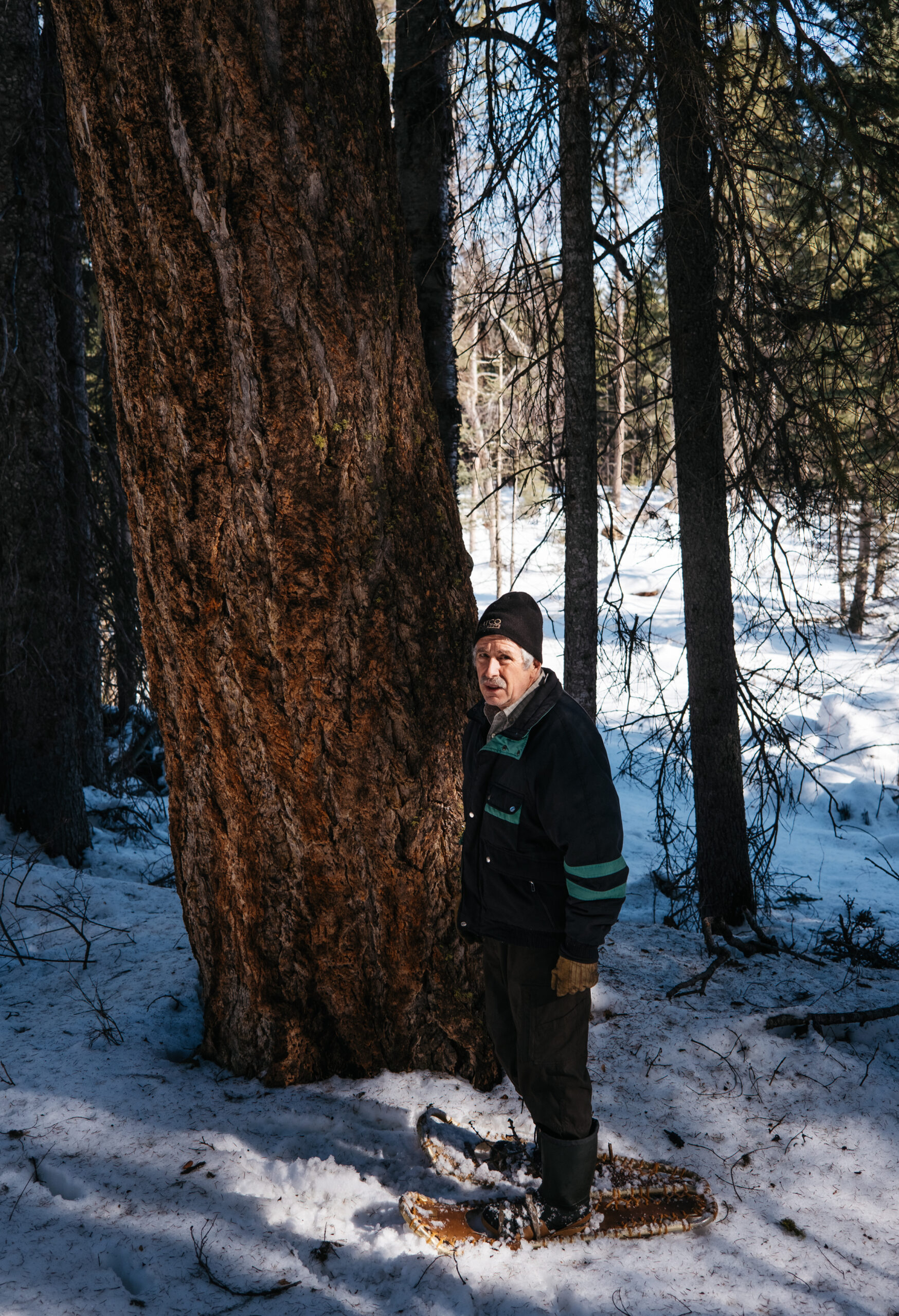

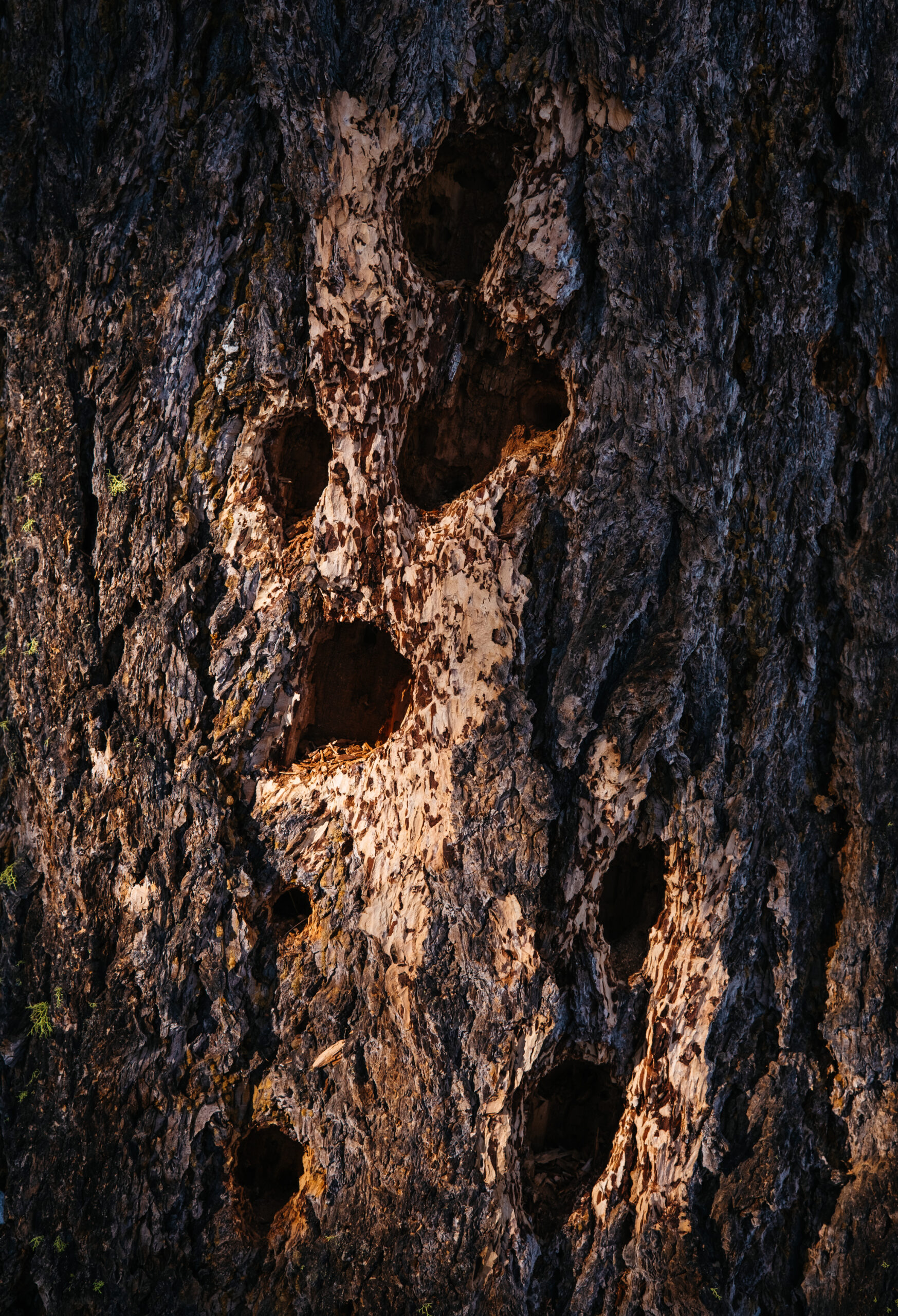
“It’s 54 inches in diameter or five grade ones,” he says.
I give him a puzzled look.
“It takes five Grade One kids to reach around it,” he explains, laughing at his own joke.
We continue on. Past the big fir’s twin that fell down in a windstorm, through an open area filling in with small poplars and alder, across an old set of tracks left by a moose; our own footsteps leading us back to Delisle’s home. Pausing, he points to a stand of trees thicker than the surrounding forest.
“I left this little corner alone this time because there’s an owl’s nest in it,” he says.
Get the inside scoop on The Narwhal’s environment and climate reporting by signing up for our free newsletter. On March 17, federal Conservative Leader Pierre Poilievre...
Continue reading
Notes made by regulator officers during thousands of inspections that were marked in compliance with...

Racing against time, dwindling habitat and warming waters, scientists are trying to give this little-known...

From investigative reporting to stunning photography, we’ve been recognized with four 2024 CAJ Awards nods...
